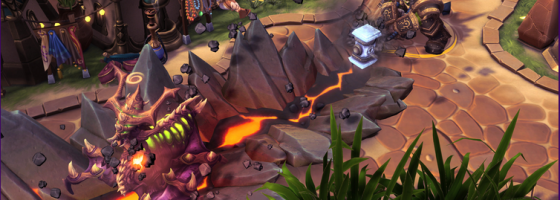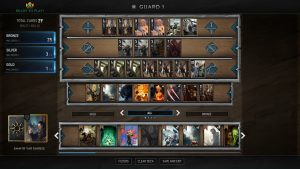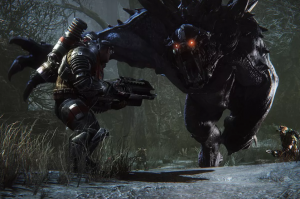At the end of 2018, we saw what looks to be the end of the ESports career of Heroes of the Storm, as Blizzard pulled off the dev team to work on other projects. Following that, it was announced that Dragon Ball Fighter Z tournaments were stopped by Toei Animation. Both games have their dedicated fans, and it presents the perfect examples of how ESports titles operate under a tricky relationship between developers, publishers, and fans.
Building an ESport:
The ESport market is one of the biggest areas of videogames. This past year with the all-out explosion of Fortnite, continued support of Eleague, and more colleges offering ESports scholarships are major examples.
Developers and publishers are both trying to create the next great ESport, as it creates money for everyone involved. For developers and publishers, they get continued interest and essentially free advertising on a game. Not only that, but it creates a great foundation for continued development and DLC.
For ESport players, they get another game to add to their professional resume, along with any continued sponsorship deals and prize money. Finally, the sponsors get another area of advertising their brand.
With all that said, a lot has to go right for a game to take off, and for every game that does, we see dozens that fail. I’ve lost count of the number of team-based shooters, DOTA clones, battle royale, and fighting games that came and went faster than you can say “EVO.”
Even if your game is great, that also doesn’t mean that it can become the next ESport. What is popular among consumers and ESport players may not always align. Then you have the oddball example of Smash Brothers despite Nintendo not building it for ESport play, becoming one of the current pillars of the fighting game community.
One aspect of design that is important is understanding the importance of appeal to all skill levels — From the grandmasters, to the people who have never played the genre.
The Circle of Fandom:
An area that ESports differ from traditional sports is cultivating and maintaining a fan base. Sports like football, soccer, and so on, don’t have to worry about their fans one day leaving and going to another sport.
For ESports however, there is always competition to worry about and dealing with your fans. Any great Esport title must be designed around a very wide skill curve. Someone brand new should be able to start playing and enjoying your title, but at the same time, there must be enough depth to your game to warrant high-level play and keep the players engaged.
Focusing too much on either extreme is an easy way to kill a game’s ESport viability. Without making it easy to learn, you’re not going to have people wanting to play it or even watch footage of it.
Without the depth, then professional players will get tired of the game and would rather play something else. More importantly, if there aren’t enough people following a game, then there won’t be advertisers wanting to invest money in it, which means that it won’t be worth it to play from an ESports perspective.
With that said, there is one factor that the fans don’t have control over, and it’s what Heroes of the Storm and Dragon Ball Fighter Z fans have recently dealt with.
Keeping the Game Going:
The other half of the formula when it comes to ESports titles is constant growth and improvement by the developers. Any ESport title must have consistent support to keep the game from becoming fixed. Once players have figured out the best strategy, it will dominate the metagame until changed. That means the game must see balancing done and new content to keep it from becoming stabilized.
This push is what drives the idea of a “lifestyle game” or “games as a service,” and can make a game’s development never-ending. If something happens, as with HOTS and DBFZ’s case to developer interest or outside factors respectively, then that can kill the game’s support. No ESport title can continue to exist without development and new content renewing interest in it.
This past year, we saw Gwent try to restructure itself via the Homecoming update, and despite all the work that has went into it and its ESports push, news has quieted down a lot for it. Artifact which was going to be Valve’s push into the CCG genre has had a huge turnover rate following its release.
The ESports market is built on sustaining highs and avoiding lows, but when those lows happen, they can become impossible to correct.
The Downward Spiral Effect:
ESport titles have one unique factor to them compared to traditional games, and that is their lifespan. For a regular game, that title will remain viable and playable for as long as you can buy it from a store. For ESports games however there is a dangerous difference: if there is no playerbase for a title and that game dies and the servers go down, then that title will literally not be playable anymore.
This is the downward spiral effect that no developer wants to happen to their game. Once players start leaving a game for any reason, it will become harder to keep people invested in it.
No one wants to buy a game where there aren’t enough players available or the game has serious problems to it. As bad word of mouth spreads, less people will be interested in trying the game out as things continue to decline.
We sadly saw this with Evolve, and how no matter how many patches and rebalancing attempts were made, once gamers wrote it off, the spiral became unavoidable. And when it happens, it can easily take down a studio in the process due to the amount of money that gets put into developing and maintaining an ESport.
Another point is that this makes developers very cautious about issues reported or fans having trouble with their game. Last year, Rainbow Six Siege ran into a minor controversy after trying to self-censor the game to make it more appealing to the Chinese market. Due to the backlash from fans, and to avoid players leaving the game, Ubisoft went back on this decision.
Going All In:
ESports can mean huge money and notoriety for everyone involved, and it continues to attract developers and publishers looking to hit it big. Like-wise, there are plenty of gamers who either dream of becoming an ESport player, or making a living via streaming these games. However, one can’t keep going without the other, and if a game goes down, plenty of lives are affected.
Traditional sports are not going to disappear anytime soon, but then again, no one has to keep updating football every three months with new rules.
This also raises a big question that I want to ask if anyone has thought of: What does this mean for colleges and schools looking to develop ESport-related curriculum and scholarships? Despite the popularity of mega games like Fortnite, CS:GO, and League of Legends, it still feels risky to me for education to look at partnering with an ESport game. If anyone has any expertise on this topic, I would love to talk to you more on one of my podcasts, as this has been a topic in the back of my head for a long time.




